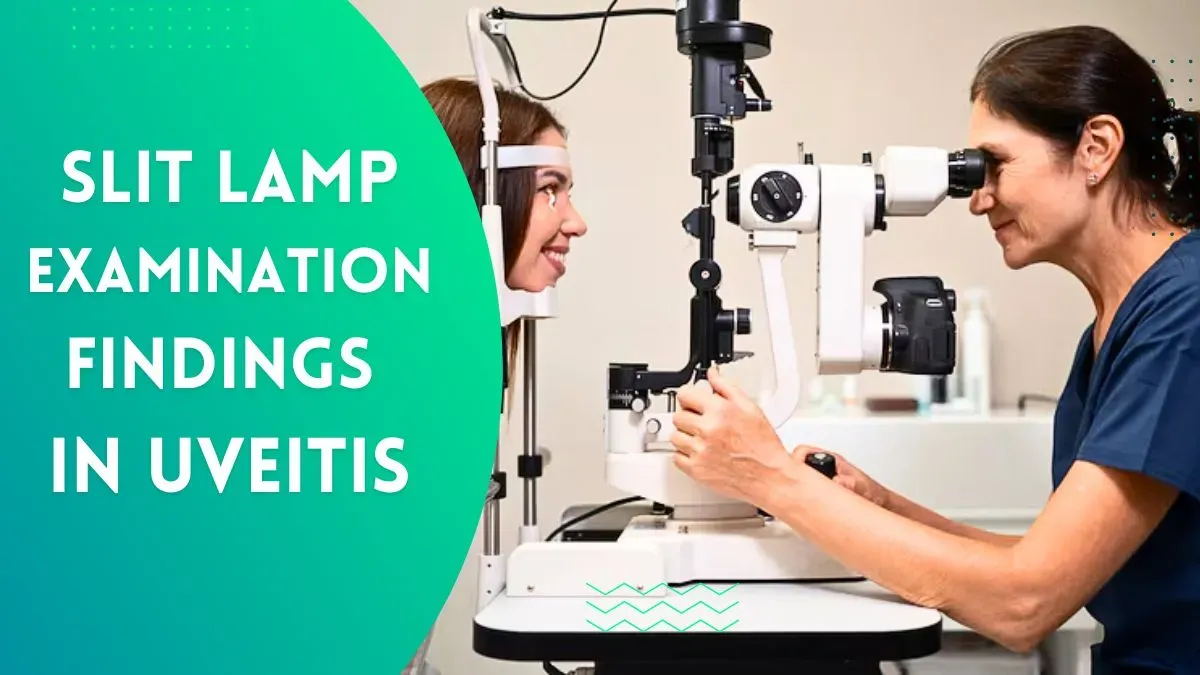Uveitis refers to inflammation of the uveal tract, which includes the iris, ciliary body, and choroid. Slit lamp examination plays a crucial role in diagnosing and assessing the severity of uveitis. Depending on the anatomical location, uveitis is classified as anterior, intermediate, posterior, or panuveitis, with each type presenting distinct findings under a slit lamp.
1. Anterior Segment Findings (Anterior Uveitis)
Anterior uveitis is the most common form and involves inflammation of the iris and/or ciliary body. Key slit lamp findings include:
Aqueous Humor Abnormalities
- Cells in the Anterior Chamber: White blood cells floating in the aqueous humor, graded on a scale of 0 to 4+ based on density.
- Flare: Increased protein content in the aqueous humor due to blood-aqueous barrier breakdown, appearing as a "smoky" or "hazy" effect under oblique illumination.
- Hypopyon: Accumulation of inflammatory cells in the inferior anterior chamber, seen in conditions like Behçet’s disease and infectious endophthalmitis.
Corneal Findings
- Keratic Precipitates (KPs): Inflammatory cell deposits on the corneal endothelium, classified as:
- Fine KPs: Small, dust-like deposits seen in non-granulomatous uveitis.
- Mutton-fat KPs: Large, greasy deposits characteristic of granulomatous uveitis (e.g., tuberculosis, sarcoidosis, syphilis).
- Stellate KPs: Star-shaped deposits seen in Fuchs' heterochromic iridocyclitis.
Iris Findings
- Posterior Synechiae: Adhesions between the iris and lens capsule, potentially causing pupillary distortion.
- Iris Nodules:
- Koeppe Nodules: Small nodules at the pupillary margin.
- Busacca Nodules: Larger nodules in the iris stroma, seen in granulomatous uveitis.
Other Anterior Segment Findings
- Conjunctival Injection: Circumcorneal redness due to ciliary body inflammation.
- Lens Changes: Prolonged inflammation may lead to cataract formation (uveitic cataract).
2. Vitreous Findings (Intermediate Uveitis)
Intermediate uveitis primarily affects the vitreous and peripheral retina. Key slit lamp findings include:
- Vitreous Cells: Inflammatory cells floating in the vitreous humor.
- Vitreous Haze: Clouding due to excessive inflammatory cells, affecting visual acuity.
- Snowballs: White clumps of inflammatory cells in the inferior vitreous.
- Snowbanking: Accumulation of inflammatory exudates along the pars plana, characteristic of pars planitis.
3. Posterior Segment Findings (Posterior & Panuveitis)
Posterior uveitis involves the retina, choroid, and optic nerve, requiring fundus examination with a slit lamp and a condensing lens (e.g., 90D or 78D). Key findings include:
- Retinal Vasculitis: Perivascular inflammation appearing as "candle-wax drippings," often seen in sarcoidosis.
- Chorioretinitis: Inflammatory lesions affecting the retina and choroid.
- Macular Edema: Swelling of the macula leading to blurred vision.
- Optic Disc Edema: Swelling of the optic nerve head due to severe inflammation.
- Retinal Hemorrhages: Associated with severe inflammatory or infectious conditions.
Diagnostic Grading and Ancillary Tests
- Cell and Flare Grading: Standardized by the SUN (Standardization of Uveitis Nomenclature) criteria.
- Fundus Fluorescein Angiography (FFA): Useful in detecting retinal vasculitis and macular edema.
- Optical Coherence Tomography (OCT): Helps assess macular edema and structural changes.
- B-Scan Ultrasonography: Used when media opacities prevent direct visualization of the posterior segment.
Conclusion
Slit lamp examination is an essential tool in diagnosing and monitoring uveitis. A systematic approach to identifying anterior chamber cells, KPs, synechiae, vitreous opacities, and posterior segment inflammation can help guide appropriate management. Further imaging and laboratory tests may be needed for definitive diagnosis and treatment planning.

